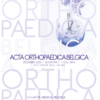Cervical spine injuries in spinal ankylosing disorders: results of single-stage posterior stabilization without posterolateral fusion
Spinal ankylosing disorders; cervical spine; injury; posterior stabilization; bone grafting; myelopathy
Published online: Feb 17 2023
Abstract
Patients with long-segment cervical spinal fusion resulting from spinal ankylosing disorders (SADs) are at high risk for highly unstable cervical spine fractures necessitating surgery as the treatment of choice; however, without an existing gold standard. Specifically, patients without concomitant myelo- pathy, representing a rare entity, may benefit from a minimized surgical approach of a single-stage posterior stabilization without bone grafting for posterolateral fusion. This retrospective monocenter study in a Level I trauma center included all patients treated with navigated posterior stabilization without posterolateral bone grafting between January 2013 and January 2019 for cervical spine fractures in preexisting SADs without myelopathy. The outcomes were analyzed based on complication rates, revision frequency, neurologic deficits, and fusion times and rates. Fusion was evaluated by X-ray and computed tomography. 14 patients (11 male, 3 female) with a mean age of 72.7 ± 17.6 years were included. Five fractures were at the upper and nine at the subaxial cervical spine (predominantly C5-7). There was one surgery-specific complication of postoperative paresthesia. There was no infection, implant loosening, or dislocation, and no revision surgery necessary. All fractures healed after a median time of 4 months and 12 months being the latest time of fusion in one patient. Single-stage posterior stabilization without posterolateral fusion is an alternative for patients with SADs and cervical spine fractures without myelopathy. They can benefit from a minimization of surgical trauma while having equal times of fusion and no increased rate of complications.
